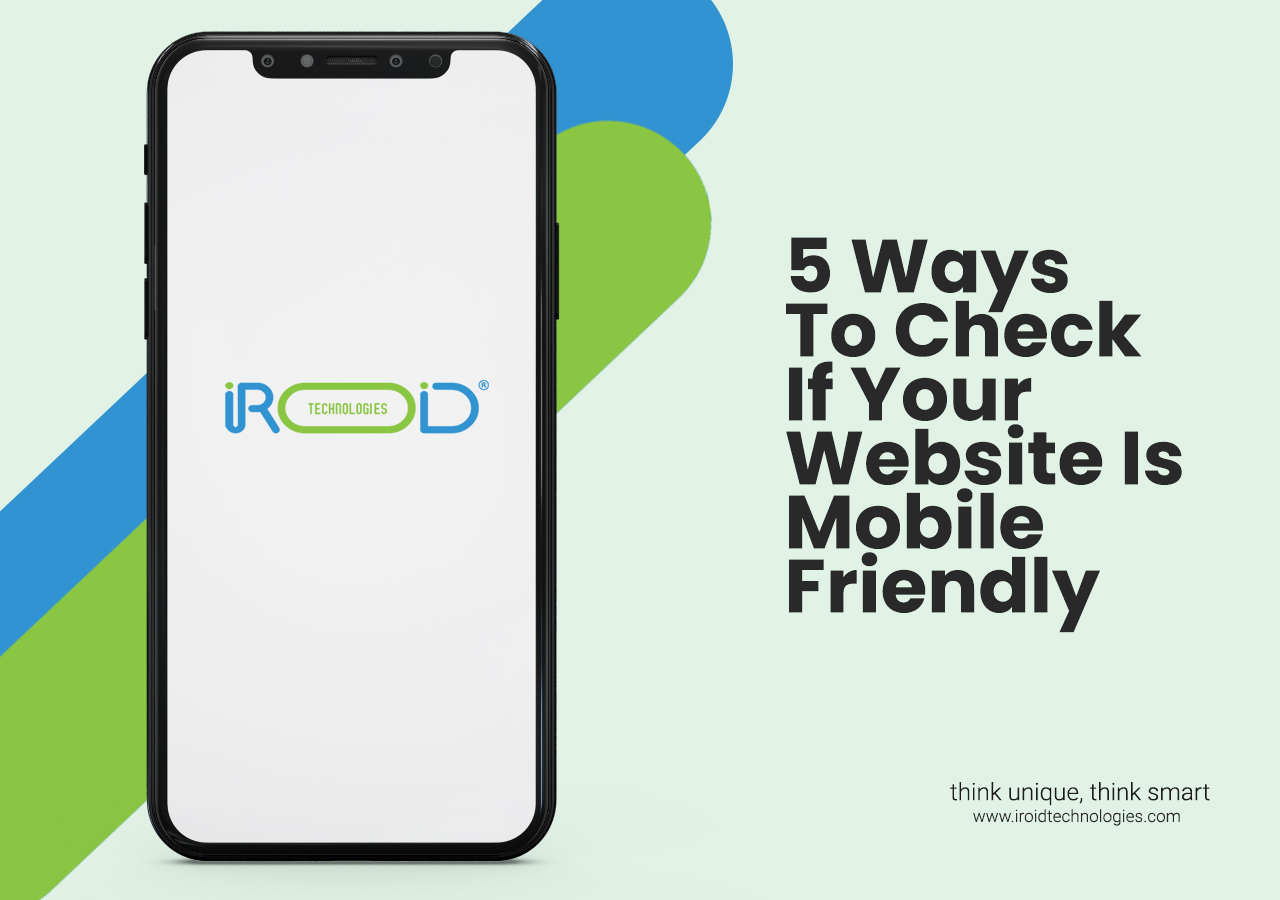5 Ways To Check If Your Website Is Mobile Friendly

You might be surprised to understand that more than half of all web traffic is developed from mobile devices such as iPhones, iPads, Android phones, and tablets. Now, more than ever, if a corporation’s website isn’t mobile-friendly and comfortable to consider on a small screen, a brand could overlook more than 50% of possible customers.
If your site isn’t optimized for mobile use, your brand isn’t tolerable and business will probably mourn.
What does it suggest to be mobile-friendly?
When your website is mobile-friendly, it’s created, designed, and optimized for users on all common mobile devices.
How mobile-friendly is your website?
You can use the Google tool to test if your present website is mobile-friendly. This easy test takes less than one minute to evaluate how your site piles up. You’ll learn what usability errors appear on your site and how you can enhance them.
Why is it necessary to be mobile-friendly?
Aside from the point that more and more internet users and customers are utilizing mobile devices to scan the internet and shop online, mobile-friendly websites profit from a host of other benefits, too. For instance, Google prioritizes mobile-friendly websites, which signifies your company can’t afford to be mobile-unfriendly. Google is accountable for almost 95% of all internet search traffic, so if your website is moved down on the search rankings, you’ll skip out on momentous openness and business.
Things You Can Do To Mobile-optimize Your Website Today
1. Prioritize Easy Navigation
When a website isn’t mobile-friendly, it’s frequently challenging to navigate, view, and use on a mobile gadget. Website visitors might have to zoom in to read content or scroll endlessly to discover a button or link on which to connect. This type of website experience is frustrating, and users are better likely to leave the site. In order to stop unnecessary bounces from your website, make sure you prioritize comfortable navigation. Broaden buttons, text, and menu alternatives. Touch screen navigation can usher to random clicks if your buttons are too large, too small, or in the way of a finger that's attempting to get the page to scroll.
2. Make Certain It’s Responsive
When a website is responsive, it’s more comfortable for the site observer; it minimizes scrolling, panning, zooming, and—most notably—perplexity. Website visitors don’t want to be mistaken when they land on your website; a confusing customer never operates.
Responsive design makes the occasion enjoyable for every guest, regardless of what device they operate to consider your site. The responsive design utilizes a grid system which indicates the page is separated into columns (typically 12) that are sized at 100% of the width of the browser. This grid is fluid and relaxed and the content within it can adjust and shuffle itself (move, stack, etc.) to check the screen size. The term "responsive" is employed because the grid and content within it can recognize and "respond" to the size of the screen on which it occurs.
To guarantee your website is responsive, hire a professional developer to create your site, or create it by collaborating with expert website development companies in Cochin.
3. Don’t Block Javascript, CSS, or Image Files, and Stay Out from Flash
Without obtaining too technical, Javascript and CSS permit Google to view your website as a viewer and then correctly index it for optimal search rankings. If your website bars the Googlebot’s entry, it can result in more down rankings and minor visibility.
Avoid Flash—it’s not backed by Android or iOS, so actually if you use it, it won’t occur on mobile devices; this will show to users visiting an error that reads something like “Unplayable Content.” This type of error will likely complicate your viewer and provoke a less-than-satisfactory occasion.
4. Optimize Images
When dealing with photos, make sure you solely include high-quality photos and illustrations.
Refrain from employing images that are too short or low-resolution. Maintain character by confirming that the mobile site and the desktop site both have the exact alt text for photos, which is the text employed to represent an image.
5. Stick to Normal Fonts
Standard fonts are much more comfortable to read on small devices; they’re web-safe and consistent with HTML/CSS. Multiple devices like Android and iOs arrive with preinstalled web-safe fonts like Open Sans, Lato, or Roboto. You'll also like to ensure you optimize font size for mobile—16px is typically the rule for the most suitable font size for body copy on mobile. What may seem a good size on your desktop may arise tiny on a phone and small text on a miniature device is a big pressure on the eyes. You can manage font sizes on various screens with media queries. A good rule of thumb is to bypass using highly ornamental script fonts because they will be difficult to read on a small screen. Pick a neat, simple serif font like Georgia or any standard sans-serif font like Roboto for a prolonged body of text.
Conclusion
Mobile viewing is likely to continue to be the preferred method for conducting searches in 2019 and 2020. only to come across a voice search. We wish to visit each and every company and add these crucial mobile aspects to their websites. To give your mobile viewers an amazing trip and to avoid penalties from Google or other search engines, you need difference and responsiveness.
Get that website divided up into sections so that your content may be easily summarised as a deterrent. Use buttons and menus to make it easy for users to browse your website. This might have served as a warning for some of our viewers who have older websites. iROID Technologies, the most reputable web development company in Kerala, is here to help you with your responsive web design, so don't be alarmed. Simply send us an email using the contact page. We'll be in touch with you as soon as we can to help you advance that website!
What should you do if a website does not work on mobile devices?
Making the website mobile-friendly or even completely redesigning it to make it new, quick, and MOBILE-FRIENDLY is the primary priority in this situation.
If a website is mobile-friendly, what should you do?
Congratulations if your website is responsive to mobile devices! In such a situation, you should concentrate on other aspects of the Google page experience, such as HTTPS, Core Web Vitals, and effective advertising.

